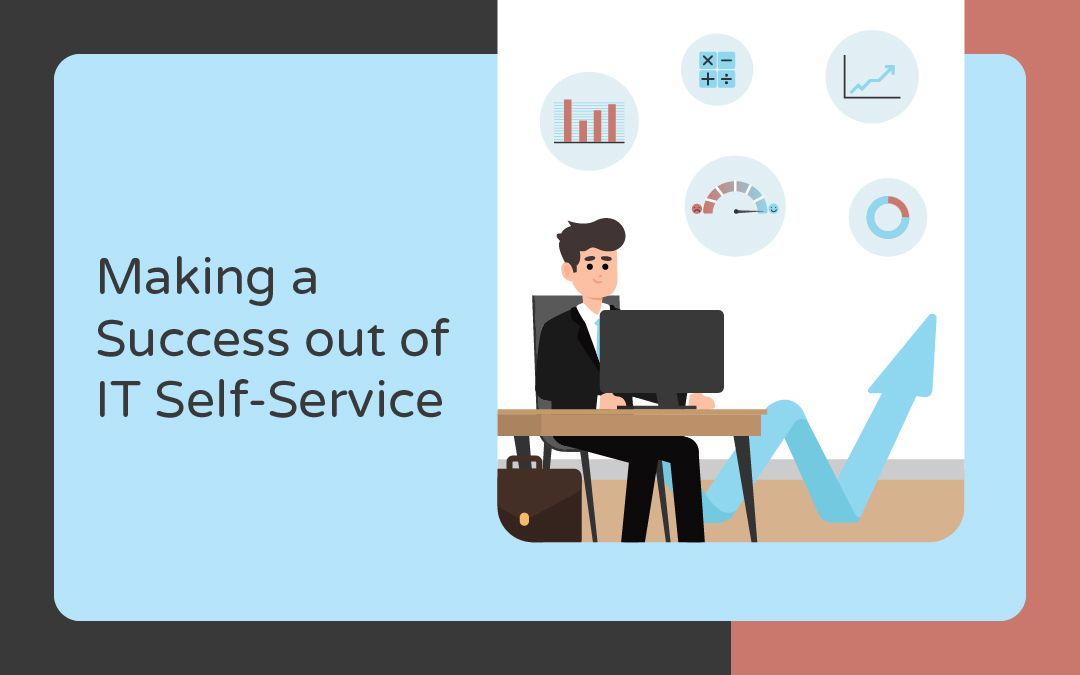When it comes to offering IT self-service solutions, the traditional “build it and they will come” approach alone, is no longer conducive to a successful service desk solution. In a world where answers are at our fingertips, the expectation is that issues can be resolved rapidly and many times autonomously. One way to achieve this is by introducing self-service where users or customers can resolve their own issues. This option allows for swifter problem resolution as there is no need to wait for a support analyst to respond to your query, provides an improved user experience, and is likely to reduce the amount of time and effort required by your IT team.
However, not all self-service options are the same. So, how do you ensure that you roll out a great self-service solution? First, you need to understand exactly what self-service is.
What is Self-Service?
Self-Service is a capability that consistently works around the clock to save you money. Sounds great right? There’s a bit more to it than that. It means offering customers and employees readily available tools and resources, in order to find instant solutions on their own, without requiring assistance from another human. Quite simply, self-service is an approach which helps someone else help themselves. Let’s consider a few examples:
Example 1: Resolving Repeated Errors
Have you ever encountered constant printing errors despite following the correct process? This is frustrating as it detrimentally impacts productivity for those involved, including the IT support team. To counteract this, having an IT Self Service Portal can guide the user through the printing process and provide clear instructions on common errors, in order to resolve them quickly. One primary benefit of this is that if an error is repeatedly searched for, it can notify the help desk of a potential hardware or software issue, allowing them to better resolve the problem in the long run.
Example 2: Password Resets
Nowadays, flexible working patterns are the norm and not everyone works during the traditional 9 – 5 working hours. Employees are logging into work at all sorts of times, meaning that they may run into issues at any point during the day (or night). With self-service capabilities, the IT service desk does not need to be manned at abnormal hours in case someone needs support with resetting their password or any other similar issue. This can be done at anytime, anywhere; without involvement from another human.
Example 3: Asset Upgrade Requests
A fundamental component of an IT service desk is the ability to request equipment upgrades and report concerns with existing equipment before they become critical. You can use a self-service portal to report recurring issues, which may indicate that your equipment needs to be upgraded. The self-service portal also has the capability to measure how many times a person searches for an answer to an incident on an out-of-date device and advise of possible issues as they arise, rather than attempting to resolve them after they have occurred. This enables both the user and the IT service desk to anticipate the need for replacement equipment before data is lost due to a system failure.
How can I make a success out of Self-Service?
1. Invest in it for the long run
This may seem obvious, but you would be surprised how many organisations quickly design their self-service capabilities, implementing them in a rush, without tailoring it to their customers. Throughout that whole (half-hearted) process, they had little to no input from their target audience. Then, when it inevitably fails to perform well, self-service gets a bad reputation. Believe it or not, it is only successful when its working for the customer. It takes significant time and research to get it right and tailor the knowledge base to the needs of your customers. And since their needs are always changing, along with certain requirements, this is an ongoing process.
2. Knowledge is power
A knowledge base is a platform of published documents across multi-channels, which includes a collection of how-to guides, answers, instructions, documentation and frequently asked questions. These should regularly be refreshed and kept up to date. One idea could be to designate an editor to manage the information and ensure everything is relevant. Empower your customers through these well thought out articles so they can troubleshoot their own issues without interference. The primary benefit of this is to allow your customer to resolve their issue quicker and by themselves, which in turn reduces the number of issues that an IT or Support Team need to address, as common questions or queries can be solved with just one article, instead of multiple calls to your support agents.
3. Develop a strategy
As tech is evolving with people, people are also evolving with tech. No matter what changes take place though, the expectation of the customer will always remain the same. If you want to exceed expectations, it will require a robust self-service strategy to ensure all the critical components are included. Without this laser focus and clear pathway to follow, it will result in an inability to meet customer needs, and the stress will fall upon your support teams. With a well-defined strategy in place, you can avoid the headache. This will involve careful consideration as to the knowledge management, the self-service channels, business objectives, and of course the customer’s needs.
Conclusion
There is a lot involved in making a success out of IT Self Service, but the bottom line is that there are unlimited benefits for your business. Yes, success is not an overnight fix, but everything begins with understanding. Now you have a clearer understanding of self service, why not contact us to find out how our self-service portal can increase your chances of success?
